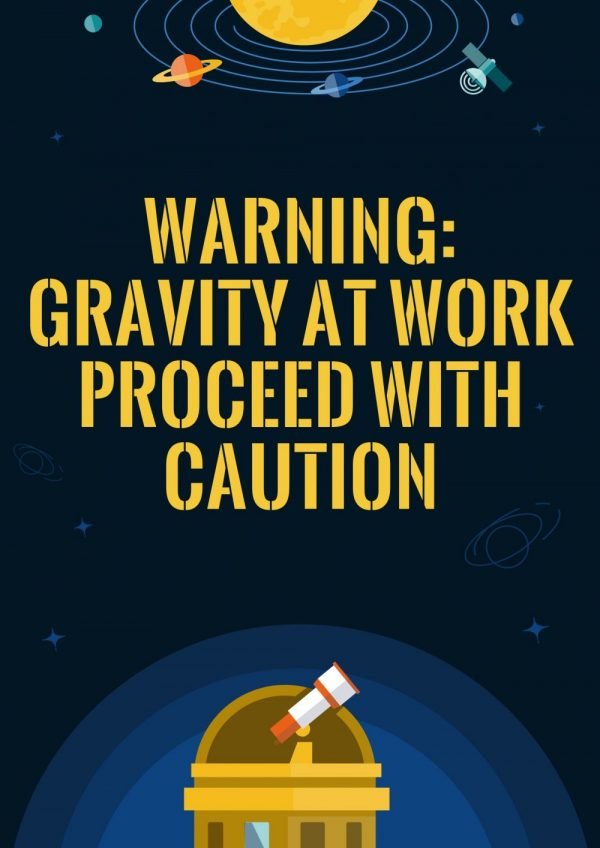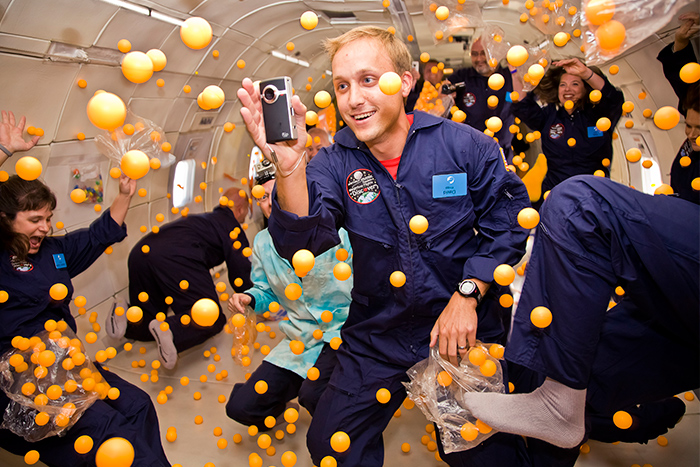

In the centuries to come we may therefore see a form of gravitational segregation, as our species divides into various tribes, adapted to zero, fractional, and one gravity. However, should permanent settlements be established, any children born on those worlds may never be able to risk visiting the home planet. On the Moon and Mars-the two most promising destinations-gravity is one-sixth and one-third the Earth's, so we would have a reassuring feeling of enhanced strength there. It is fortunate that the only planets in the solar system with gravity greater than Earth's are the gas giants Jupiter and Neptune, which have no solid surfaces and so are unlikely targets for future explorers. The heroic volunteers had a mere 30-second window of opportunity… One of the great unsung moments in the conquest of space was when the Vomit Comet was used to test space-toilet design. The plane's carefully controlled flight pattern can produce weightlessness for nearly half a minute. Weightlessness does have certain problems, however, and NASA's famous-or infamous-flying laboratory, the aptly named "Vomit Comet", has been used to study some of them. Humans have now lived in space for longer than a year, and indeed some astronauts became so addicted to freedom from gravity that they were reluctant to return to Earth. I am indeed happy to say that the society is still very active and is now the world's oldest organization devoted to space exploration.Īs it turned out, our fears of weightlessness were much exaggerated, although there may be long-term effects about which little is yet known.

To demonstrate the British Interplanetary Society's considerably higher speed version, we used a spinning disk on which we had painted the letters "BIS." These were quite unreadable until one peered into the coelostat, where they appeared motionless. This employs mirrors moving in such a way that the reflected sky appears stationary.
ASTRONAUTS NO GRAVITY HOW TO
So we premature 1930s space cadets had designed a spinning spaceship, but how to observe the moon and stars if we were revolving several times a minute? Fortunately, astronomers had long ago solved this problem for the Earth, which revolves once a day, with an instrument known as a coelostat. However, there appeared to be a simple solution: Make the living quarters of the spaceship a slowly revolving drum, so that centrifugal force gave the occupants the sensation of weight, allowing them to walk on a cylindrical "floor." My late friend Stanley Kubrick showed this, on rather a lavish scale, in 2001: A Space Odyssey's orbiting Hilton hotel. Some horrifying scenarios had been predicted: One held that the heart would race uncontrollably in zero gravity, so that any foolhardy astronauts could expect a swift but merciful death. One of these-well known even to Jules Verne when he wrote From the Earth to the Moon in 1865-was that for most of the time the occupants of a spaceship would be weightless.īecause this condition cannot be reproduced on Earth for more than a few seconds, no one knew how the human body would react to it. Though none of us could have guessed that the first moon landing was only three decades in the future, we were already concerned with the problems that might arise during the voyage. I am now the only survivor of that little group of British Interplanetary Society members. They believed that one day it would be possible to travel to other worlds and were trying to design the navigational equipment needed for such voyages. Hanging just above them was the 1903 Wright Flyer-but the experimenters had set their sights on something far more ambitious than flight in the atmosphere. One weekend in 1939, shortly before the outbreak of World War II, visitors to London's Science Museum might have come across a dozen young men peering through a contrivance of rotating mirrors at a spinning disk a few meters away.


 0 kommentar(er)
0 kommentar(er)
